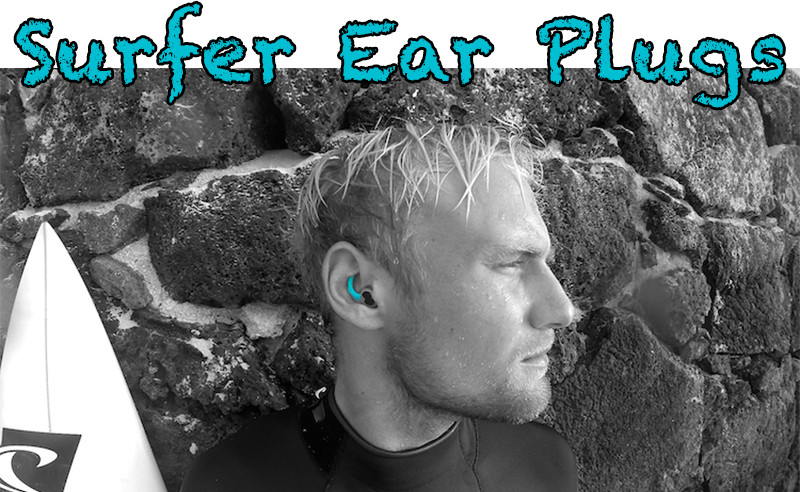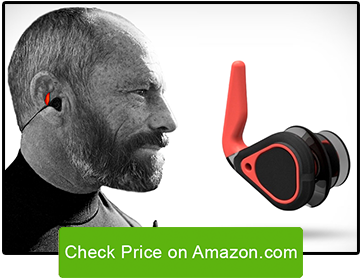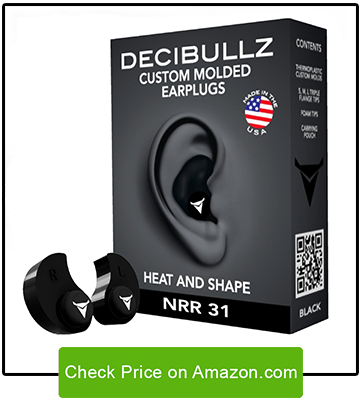
Some types of insurances are overrated.
However, when you’re choosing water sport gear primarily for insurance purposes, say a leash for your paddle or a helmet for that shallow-reef break, you need to add one more thing to your list. That is, if you haven’t already. Earplugs.
More...
What Are Earplugs?
Earplugs are a necessary insurance for anyone that loves to spend time in and on the water. Avid surfers, body boarders, kayakers, SUPs, swimmers, paddlers, and snorkelers engage in activities that repeatedly expose their ears to the elements, do sports that require balance, and use their hearing for safety reasons.
Earplugs protect our ear canal from loud noises, exposure to cold air and cold water, dirt and debris, and water contaminants. With the evolution of earplugs came variety. Nowadays, earplugs are made of myriad materials, for short- or long-time use, and in a wide range of protection levels.
Here’s a look at four of the best for surfing:
The 4 Best
#1. SurfEars 2.0
Although designed for surfers and body boarders, these earplugs work exceptionally well for a variety of water sports.
The best thing about this earplug is the wide membrane that allows sound to enter, so you can hear everything around you.
This translates to having balance during activities and being aware of your surroundings for safety purposes.
The unique shape of the winged extension makes contact with key areas of the outer ear to keep the earplug in place.
There are two different options to choose from regarding intrusion depth into the ear canal to obtain the level of comfort suitable for you. An adjustable leash will prevent loss in the water should the earplugs pop out.
With six different options per ear for a comfortable and perfect fit, these plugs stay in place. Best yet, they are easy to put on.
To read our full review click here.
#2. XIEMIN Waterproof Silicone Earplugs
These earplugs have a membrane that allows sound to enter but keeps water out, and gel ear buds for comfort.
Sounds can be somewhat muffled following submersion until water completely drains from the mesh membrane.
The shape of the winged extensions fits within the natural curve of the ear, giving comfort but less stability as the ear flexes in pounding waves.
Without a leash option, once these pop out, they are difficult if not impossible to recover.
These take a little time to position in the ear and come with three sizes of ear buds and two sizes of wing extensions to find that right fit.
#3. Fitian Waterproof Silicone Earplug
Similar design of a mesh membrane to keep water out but let sounds in.
Gel ear buds provide comfort and take some time to position in the ear to make them waterproof.
With curved winged extensions, these earplugs fit comfortably in the ear once in place, but stability is compromised when exposed to continual impact from large, pounding waves.
No leash option, so you’d want to make sure these plugs are securely in place to avoid losing them.
Comes with three sizes of ear buds and two sizes of wing extensions.
#4. Decibullz - Custom Molded Earplugs
Designed with sound plugs to specifically to reduce sound, these earplugs are also good at keeping water out. Though advertised for swimming and casual water sports, they will work for surfing as well.
Like other water sport earplugs on the market, these have a silicone bud that goes into the ear. Unlike other water sport earplugs, however, these are made of a thermoplastic that you to mold into an exact fit.
It takes time and patience to mold and even remold the earpieces in boiling water, however, once your exact fit is found, these earplugs block out water as well as sound.
You can get a lanyard to fit onto the earplugs that is somewhat adjustable for comfort in the water. Last, you should mark each plug with a L for left and a R for right after molding them for quickly knowing which is which.
Are the expensive ones worth it?
Totally.
Being able to hear acutely and maintain your balance is a great advantage for surfers.
Hearing only your heartbeat, feeling pressure in the ears, and being socially cut out of conversations does not make for a fun surf session.
Being able to hear and maintain balance is important for making improvements in your surfing skills and staying safe when in the water.
Further, getting earplugs that stay in place during heavy surf is a must if you are an avid surfer.

FAQ
What is exostosis or surfers ear?
Exostosis is a benign bony growth in the ear canal. Exostosis can cause hearing loss if growth is excessive and blocks auditory signals.
Further, the growth can trap dirt within the ear canal, causing repeated ear infections. Physicians do not fully understand why, but the growth occurs with repeated exposure to cold water and air. Preventing exostosis is easy – wear earplugs to protect ears when surfing in cold water or on those cold windy days playing in the water.
The most common way to get rid of exostosis is surgery. Either a small incision is made behind the ear so the excess bone growth can be removed with a surgical drill, or drilling occurs to remove the bone growth from inside of the ear canal itself.
How do I get rid of water in the ear?
The first option is to shake it out. However, when water gets deep into the ear, a water/vinegar mix is best to use. For stubborn water in the ears, a hot compress will help drain water out.
How do I care for my new earplugs?
Occasionally disassemble the earplugs and wash their parts in warm soapy water. Keep them in their carrying case. Saltwater is harsh, best to rinse them after each use.
How should earplugs fit for surfing?
The fit should be comfortable without protruding too far into the ear. If too tight a fit, pressure can be felt that is compounded on impact – like those ear slaps you sometimes get on a wipeout.
Can I loose my ear plugs when surfing?
Yes, and it will likely happen if you are an avid and big wave surfer. Not to worry if you use a proper-fitting leash.
Will I look dumb or do pro surfers use ear plugs too?
The pros use earplugs too. Besides, it’s a common problem for long time surfers. It’s your ears and your responsibility to take care of them, regardless of what anyone else says.
Conclusion - Which Surf Ear Plugs Should I get?
Each brand of earplugs for surfers has its pros and cons. All of the above-mentioned earplugs come with a handy carrying case. Not all come with a leash, but those that do give you the option to use it or not. If you don’t mind hearing only your heartbeat in the lineup, get sound-proof ones.
However, for hearing and keeping water out, the best ones come with a membrane that lets in sound only. Even if not completely waterproof, limiting exposure to repeated cold water flushes and cold air will help. However, an earplug that is completely waterproof also keeps dirt and contaminants out of the ear as well.






